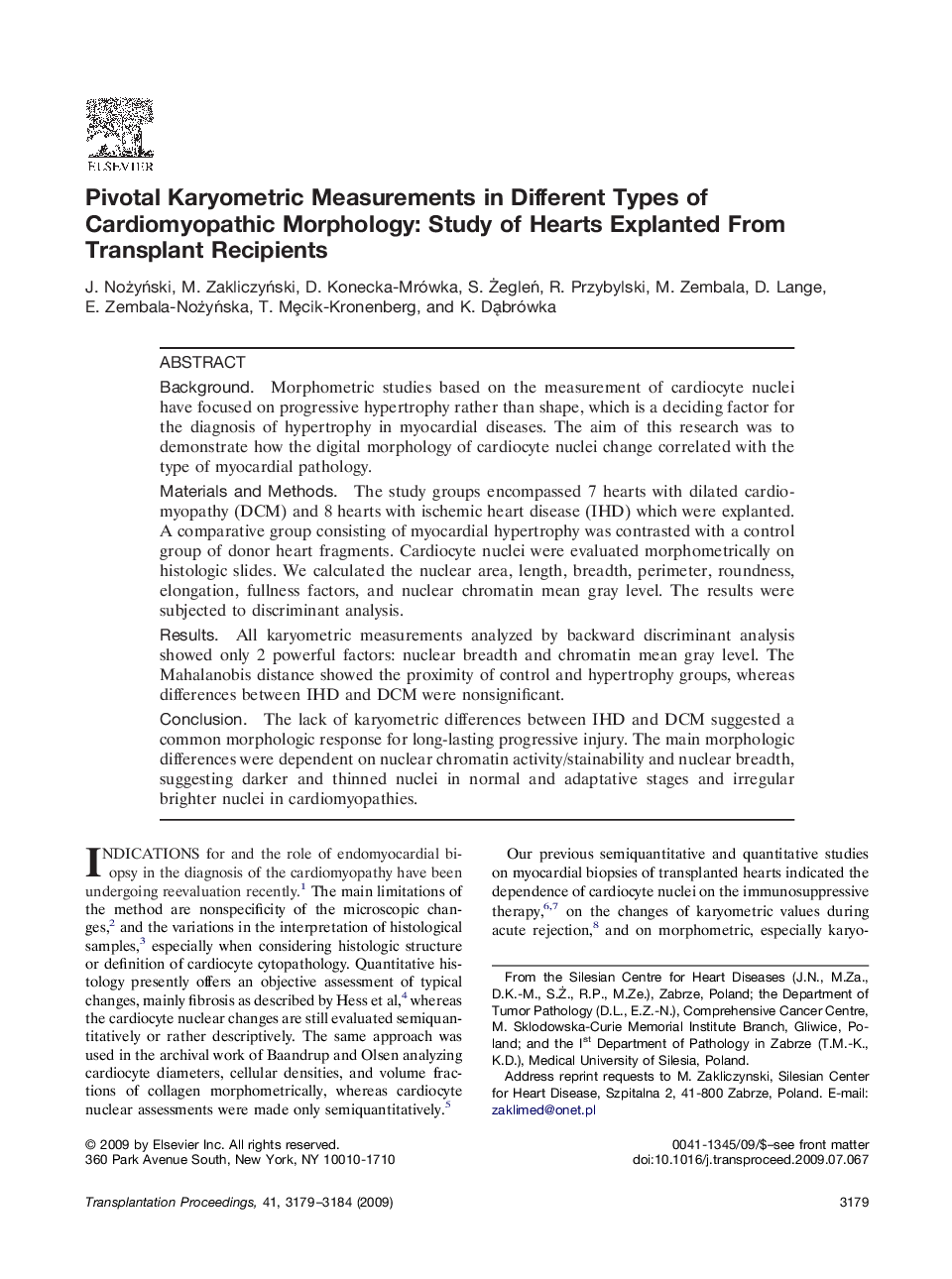| Article ID | Journal | Published Year | Pages | File Type |
|---|---|---|---|---|
| 4259017 | Transplantation Proceedings | 2009 | 6 Pages |
BackgroundMorphometric studies based on the measurement of cardiocyte nuclei have focused on progressive hypertrophy rather than shape, which is a deciding factor for the diagnosis of hypertrophy in myocardial diseases. The aim of this research was to demonstrate how the digital morphology of cardiocyte nuclei change correlated with the type of myocardial pathology.Materials and MethodsThe study groups encompassed 7 hearts with dilated cardiomyopathy (DCM) and 8 hearts with ischemic heart disease (IHD) which were explanted. A comparative group consisting of myocardial hypertrophy was contrasted with a control group of donor heart fragments. Cardiocyte nuclei were evaluated morphometrically on histologic slides. We calculated the nuclear area, length, breadth, perimeter, roundness, elongation, fullness factors, and nuclear chromatin mean gray level. The results were subjected to discriminant analysis.ResultsAll karyometric measurements analyzed by backward discriminant analysis showed only 2 powerful factors: nuclear breadth and chromatin mean gray level. The Mahalanobis distance showed the proximity of control and hypertrophy groups, whereas differences between IHD and DCM were nonsignificant.ConclusionThe lack of karyometric differences between IHD and DCM suggested a common morphologic response for long-lasting progressive injury. The main morphologic differences were dependent on nuclear chromatin activity/stainability and nuclear breadth, suggesting darker and thinned nuclei in normal and adaptative stages and irregular brighter nuclei in cardiomyopathies.
